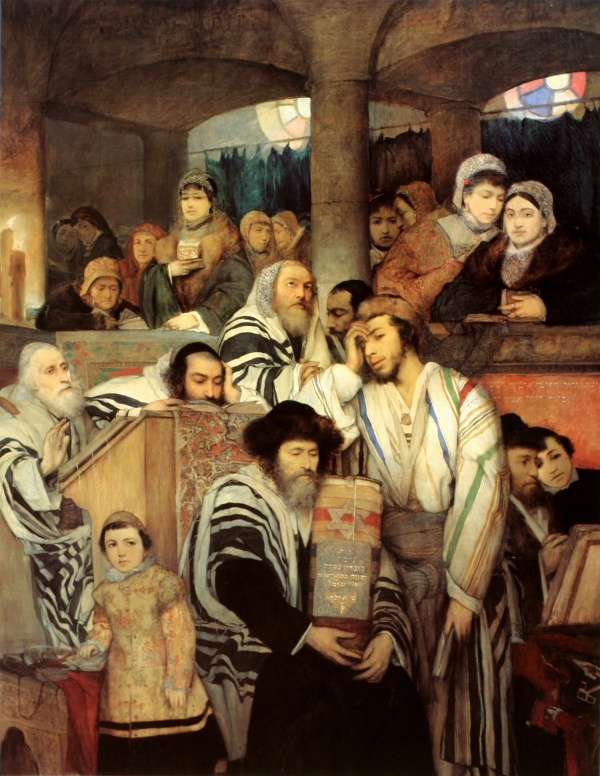Facts About Jews Praying in the Synagogue on Yom Kippur
"Jews Praying in the Synagogue on Yom Kippur" painted by Polish Jewish artist Maurycy Gottlieb in 1878, beautifully captures the essence of Yom Kippur, a deeply significant day in Judaism dedicated to repentance and reflection. This artwork showcases individuals engaged in solemn prayer during the Yom Kippur service, and the meticulous details in the painting vividly bring the scene to life.
Gottlieb employed techniques such as glazed oil paint and impasto to add depth and richness to the piece. The figures in the painting, including men wrapped in tallitot (prayer shawls) and wearing kippot (skullcaps), display expressions of solemnity and, in some cases, anguish. The central figure, believed to be a self-portrait of the artist, stands out prominently. The composition also features a Torah scroll, stained glass windows, and candles, while women can be seen observing from the balcony above.
Interestingly, Gottlieb included multiple self-portraits at different stages of his life within the painting, possibly symbolizing various aspects of his own journey. The presence of his fiancée Laura and other familiar faces suggests that the artwork holds personal significance for the artist. The overall atmosphere of the painting is somber, filled with motifs of sadness and nostalgia. This reflects the serious nature of Yom Kippur and might also hint at Gottlieb's personal struggles and the socio-political challenges of his time.
During the late 19th century, Jews in the Russian Empire faced significant discrimination and violence, which may have influenced Gottlieb's work. The artist's personal challenges, including a broken engagement and his untimely death, possibly by suicide, add a layer of melancholic depth to the painting.

 Syria
Syria